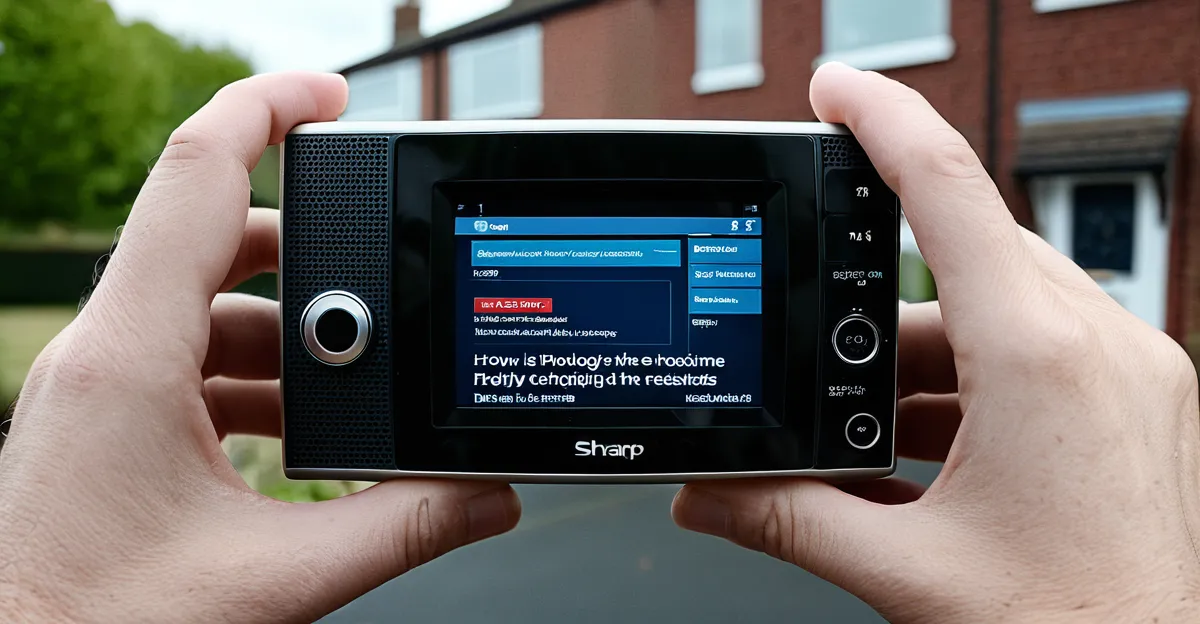Immediate Impacts of Technology on UK Daily Life
Technology has become deeply embedded in the routines of UK residents, driving a profound digital transformation across various aspects of daily life. The widespread use of smartphones, laptops, and smart devices illustrates how technology in daily life is no longer a luxury but a necessity. From communication to entertainment and work, the integration of digital tools has streamlined many everyday processes.
One of the most visible impacts is on communication. The speed and ease of exchanging information through instant messaging apps, video calls, and social media platforms have revolutionized how people stay connected. This shift has contributed to increased tech adoption rates as more UK residents rely on a range of digital platforms every day.
In parallel : How Can Emerging Technologies Reshape the UK’s Economic Future?
Furthermore, as digital literacy grows, UK users are more confident navigating various online services, from accessing government portals to managing utilities and personal health information. This surge highlights how ongoing digital transformation UK efforts are not only fostering convenience but also empowering residents with greater access to resources and information.
The rise in UK residents technology use is also evident in how individuals interact with entertainment, news, and social communities. Streaming services and digital content platforms now dominate leisure activities, while news consumption has largely moved online. These changes underscore a significant societal evolution, facilitated by pervasive technology adoption and improving digital skills across demographics.
This might interest you : What Are the Potential Ethical Challenges in Developing UK Technology?
Transforming Financial Transactions and Banking
Technology has revolutionised how UK residents manage money, driving a significant surge in digital banking UK and reshaping financial habits. The rise of mobile banking apps and contactless payments has made day-to-day transactions faster and more convenient. For instance, contactless cards and smartphone wallets enable purchases just by a tap, speeding up checkouts and reducing cash handling.
The adoption of these technologies isn’t just about convenience; it also brings notable security benefits. Many digital banking platforms use encryption and biometric authentication to safeguard user data. However, concerns remain regarding cyber fraud and data breaches, prompting continuous enhancements in security protocols.
Fintech trends have further expanded accessibility to financial services, enabling a broader spectrum of users to monitor accounts, transfer funds, and even invest through easy-to-use interfaces. This shift supports greater financial inclusion, especially for those who previously faced barriers accessing traditional banking services. Overall, these innovations illustrate how UK residents technology use in finance is accelerating, reflecting robust tech adoption rates and a steady digital transformation UK in economic activities.
Digitalisation of Public Transport and Mobility
The rapid digital transformation UK is reshaping public transport through widespread adoption of mobility technologies. Today, public transport apps UK provide real-time updates on schedules, delays, and route changes, vastly improving passenger convenience. The instant access to travel information enables commuters to plan journeys more efficiently, reducing wait times and overcrowding.
Integration of digital ticketing systems across major UK cities represents another leap forward. Passengers can purchase, store, and validate tickets on smartphones, eliminating the need for paper tickets or cash payments. This seamless process not only speeds up boarding but also supports contactless payments, enhancing user experience and safety.
Overall, these technology in daily life developments contribute to higher tech adoption rates among UK residents, as more people embrace digital tools to navigate transportation systems. These innovations boost accessibility and efficiency, marking significant progress in the digital transformation UK of mobility services.
Online Shopping and E-commerce Experiences
The ongoing digital transformation UK has markedly influenced online shopping UK, driving rapid e-commerce growth that changes consumer habits across the country. Increasing numbers of UK residents now prefer online platforms, attracted by the convenience and extensive product selections available 24/7. This shift underscores a significant rise in UK residents technology use tied to daily purchasing decisions.
One key driver of this evolution is the advancement of digital retail trends, which focus heavily on personalisation and efficient delivery options. Retailers employ data analytics and artificial intelligence to tailor product recommendations, enhancing the shopping experience. Simultaneously, innovations in logistics—such as same-day delivery and automated warehousing—meet growing customer expectations for speed and reliability.
However, the rise in online shopping also presents challenges for traditional high street shops, which face shrinking foot traffic and the need to adapt. Many brick-and-mortar stores are responding by integrating digital tools themselves, blending physical and online experiences to remain competitive. This hybrid approach reflects broader tech adoption rates that signal a maturation in the UK’s retail landscape.
In summary, technology in daily life is significantly reshaping shopping behaviour, impacting everything from browsing to checkout. Consumers benefit from enhanced accessibility and choice, while businesses must navigate the balance between digital innovation and maintaining traditional retail strengths.
Evolution of Smart Homes and Domestic Technology
Smart home technology UK is becoming increasingly common as home automation devices grow more accessible and affordable. UK residents technology use now often includes voice-activated assistants, smart thermostats, security cameras, and IoT-connected appliances. These tools collectively enhance convenience and control, allowing users to manage lighting, heating, and security remotely.
The rise in IoT adoption within homes is a core driver of this trend. By connecting multiple devices through the internet, UK households benefit from integrated systems that improve energy efficiency—such as automatically adjusting heating based on occupancy—and boost safety via real-time alerts from smart security setups.
However, while these advances contribute significantly to daily life, they also raise important concerns around data privacy. The constant data exchange inherent in smart home ecosystems requires stringent safeguards to prevent unauthorized access. Consumers are increasingly aware of these risks, prompting developers to implement stronger encryption and user control features.
In summary, the digital transformation UK in domestic technology empowers residents with innovative ways to enhance their living environments, reflecting steady growth in tech adoption rates tied to smarter, connected homes.
Advancements in UK Healthcare Through Technology
Technology has significantly transformed healthcare technology UK, with telemedicine emerging as a key driver of this change. Telehealth services enable patients to consult doctors remotely using video calls or online platforms, breaking down geographical barriers and improving access to medical care. This growth in telemedicine allows timely diagnoses and follow-ups without the need for in-person visits, making healthcare more convenient and efficient for a wider range of UK residents.
In addition to remote consultations, healthcare technology UK increasingly relies on electronic medical records (EMRs) that digitize patient data. EMRs facilitate better coordination among healthcare providers by ensuring accurate, up-to-date patient information is readily accessible. This innovation enhances treatment decisions and reduces the likelihood of errors, reflecting a vital aspect of the ongoing digital transformation UK in medical services.
While these technologies improve patient access and diagnostic capabilities, they also raise important concerns around data privacy and trust. Protecting sensitive patient data requires robust encryption and strict compliance with healthcare regulations. Addressing these issues is critical to maintaining confidence in healthcare technology UK and ensuring equitable access across diverse populations.
Overall, advancements in healthcare technology UK demonstrate how digital tools can revolutionize patient care through improved communication, streamlined data management, and expanded service accessibility, all integral to the broader digital transformation UK.
Positive and Negative Social Effects of Technology
Technology profoundly shapes social dynamics, creating both opportunities and challenges for UK residents. The social impact technology has includes enhancing connectivity through online communities where individuals share interests and support networks. These digital platforms foster inclusion and enable interaction beyond geographical limits, a significant benefit of rising tech adoption rates.
However, this increased connectivity has a downside. Prolonged screen time and easy access to digital content contribute to concerns about digital wellbeing. Issues such as digital addiction, reduced face-to-face interactions, and mental health challenges are increasingly reported among UK users. These drawbacks underscore the complexity of integrating technology in daily life without compromising emotional health.
Balancing convenience with privacy and social engagement remains a critical goal. While technology enables instant communication and resource sharing, it also raises privacy concerns related to data misuse or surveillance. UK residents’ growing awareness of these risks encourages demand for clearer regulations and tools to protect personal information.
In short, the social impact technology presents is dual-faceted: it promotes inclusivity and support but requires mindful use to safeguard mental and social health, highlighting the nuanced nature of the ongoing digital transformation UK.



